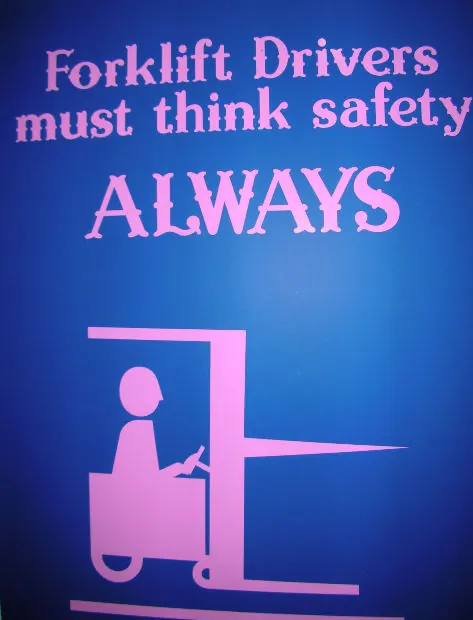Forklift accidents are a major cause of workforce injuries, especially in industrial warehouses. We will examine some of the major causes of forklift-related accidents and injuries and discuss how to prevent them.
Preventing Tip-Overs
A forklift, especially when loaded, can be top-heavy. An inexperienced or inattentive driver can make a move that results in the heavy vehicle to begin to tip. When that occurs, many drivers respond with an instinctual reaction to jump from the truck. This scenario is one of the leading causes of significant forklift-related injuries. The forklift, which can weigh several tons, or some part of the forklift can land on the driver who has jumped from the truck. This often results in severe injuries or death.
Several precautions can be taken to reduce the risk of forklift tip-over:
- Turn at low speed and maintain that low speed throughout the entire turn. The steering wheel should be rotated smoothly and slowly.
- During operation, lower the forks and keep them tilted back to increase load stability. Heavy loads that are angled too far forward or backward can cause the truck to tip.
- Strictly adhere to the maximum capacity load of the forks, established by the manufacturer.
- Do not move unstable loads.
- Move awkwardly shaped loads more slowly and cautiously.
Employee training should not be complete without assessing the ability of the new driver to avoid tipping.
Monitor Employees and Enforce Responsible Behavior
Some people find forklifts fun to drive and cannot help but to engage in horseplay. Any fooling around in the vicinity of heavy equipment should be immediately addressed by administration. The forklift driver must understand that by driving irresponsibly they are putting themselves and others – co-workers or pedestrians – at risk.
The nature of a forklift is that it is heavy and frequently unstable. Even very experienced drivers can make mistakes. If a driver is not treating the machinery with respect and is operating it unsafely, he or she should be reported and disciplined.
Safeguard Co-Workers and Pedestrians
The forklift driver bears the same responsibility as other drivers – avoiding pedestrians, who always are given the right-of-way. The driver is responsible for avoiding a pedestrian even if that person is directly in the path of the forklift.
In order to avoid pedestrians and co-workers – who are likely not always paying attention – the forklift driver must constantly look in the direction in which the truck is moving and if he encounters any intersections or blind spots, the policy of honking the horn should be strictly enforced. A forklift driver must always make the assumption that people surrounding the vehicle are not paying attention.
Even if the forks are empty, employees should be strictly advised to never walk beneath them when they are raised. Do not allow an employee to hold or position a load while the forklift is moving, as this is extremely dangerous.
Although the driver is ultimately responsible, all employees that work in an environment that uses forklifts should be given training in forklift safety, with periodic refresher meetings.
I’m Ed Smith, a Sacramento Personal Injury Attorney with the most comprehensive and informative information on the web at www.AutoAccident.com.
If you or someone you love has been in a forklift accident, call me (916) 921-6400, or (800) 404-5400 if you are outside of the Sacramento area, for free, friendly advice.
Find out more about our office by reading our reviews on Yelp or Avvo.

